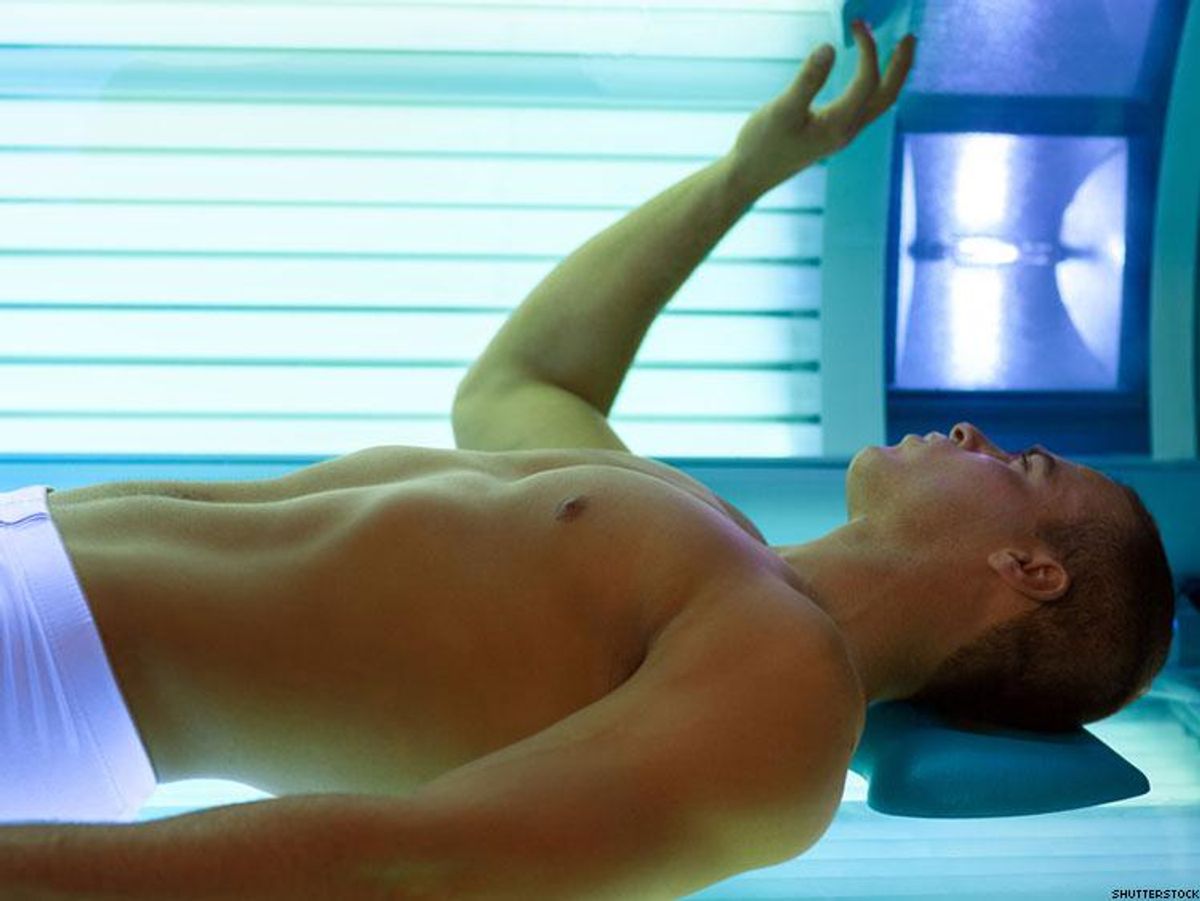Gay and bisexual men have some of the highest rates of skin cancer, and a new report suggests tanning beds may be to blame. Published last month in JAMA Dermatology , the study was conducted by San Diego State University psychology professor Aaron Blashill. Previous reports have shown that gay and bi men are both more likely to use indoor tanning beds and are up to two times more likely to have skin cancer than heterosexual men. Observing that use of indoor tanning before the age of 35 has also been associated with higher rates of skin cancer, Blashill set out to look more closely at tanning behaviors of American teens, pulling data from the national 2015 Youth Risk Behavior Survey.
Blashill discovered that young Black and Latino men who have sex with men had far higher rates of tanning salon use than gay and bisexual White teens.
“Contrary to popular thought, racial and ethnic minorities engage in indoor tanning and it appears to be particularly concentrated among sexual-minority adolescent boys,” Blashill was quoted as saying in Consumer Affairs.
In fact, young Black gay and bi males were as likely to use indoor tanning as White female teens. For those that assume the use of tanning beds is to darken one’s skin, these findings seem counterintuitive, “But,” Blashill argued, “if we think of indoor tanning as a coping strategy, then the findings begin to make more sense.”
In other words, Blashill argues that young MSM of color aren’t drawn to indoor tanning for aesthetic reasons, but psychological ones. Pointing to the fact that UV exposure has been show to have relaxing properties (through the release of endorphins) Blashill suggests gay and bisexual Black and Latino teen boys go to tanning salons to cope with the mental distress caused by the discrimination, prejudice, and bullying they receive due to their race and sexual orientation.
Blashill’s paper concludes that these findings need to inform skin cancer education and prevention efforts, so these young men of color don’t continue to bear a disproportionate burden of the cancer.








































































